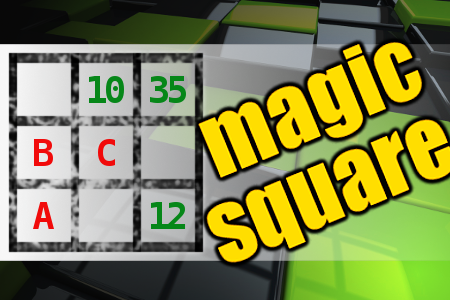MAGIC SQUARE: Calculate A+B+C
The aim is to place the some numbers from the list (6, 8, 10, 12, 14, 18, 27, 29, 35, 74) into the empty squares and squares marked with A, B an C. Sum of each row and column should be equal. All the numbers of the magic square must be different. Find values for A, B, and C. Solution is A+B+C.Correct answers: 42
The first user who solved this task is Djordje Timotijevic.
#brainteasers #math #magicsquare

Mansplaining ... and few more short fresh jokes
My wife asked me what "mansplaining" means
...now what am I supposed to do?
If you spell the words "Absolutely Nothing" backwards, you get "Gnihton Yletulosba" ...
…which ironically means Absolutely nothing.
I was feeling depressed. So my wife put her hand on my shoulder and said: "Earth."
That meant the world to me.
I worked really hard on a party to blend my Mexican and Norwegian heritage, but in the end it was just a big disappointment.
What did I expect from a Fjord Fiesta.
I have a pen that can write underwater
It can write other words as well

